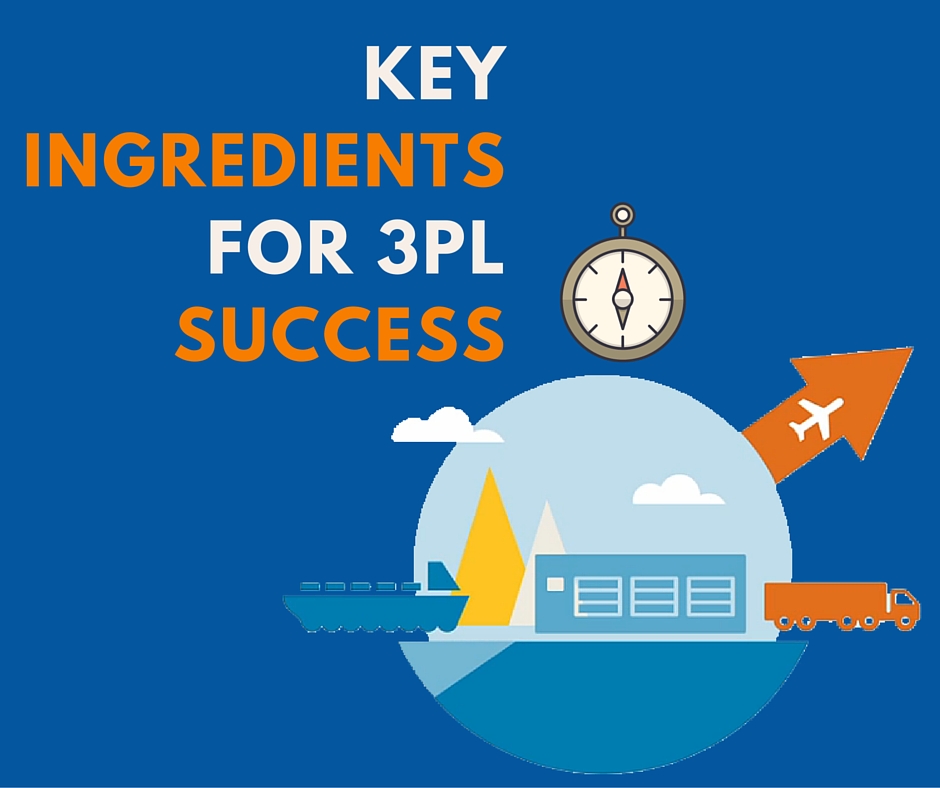The key ingredients for 3PL success

The new customer-centric business environment requires supply chains to be resilient enough to respond quickly and easily according to demand whilst maintaining vital profitability. Indeed, organisations are now required to step-up and maintain their competitive edge by treating customers as strategic partners in order to keep up with the tech-savvy consumer.
The result? Today’s global business supply chains are becoming increasingly complex and central to their success are the logistics networks that support them. Across Europe, 3PLs are evolving their operations to help retail and manufacturing customers deal with supply chain challenges presented by the omni-channel environment. The companies that can effectively plan, source, make and deliver products to their customers in this ever-changing environment will separate industry leaders from laggards.
3PLs are in the perfect position to help manufacturers and retailers overcome these hurdles, but a number of factors are critical to their success.
Location, Location, Location
It is obvious that 3PL locations should be situated in close proximity to their customer’s businesses markets, in order to achieve the efficiency required in the omni-channel world. However, once geography is taken into consideration, organisations need to take it a step further and assess the quality and breadth of its transport infrastructure. The ideal warehouse, for example should be situated near to good road links, as well as airports, railways and shipping ports.
Indeed, when looking at the particular features of warehouse facilities, bi-directional scalability can be of great benefit. The mark of a good 3PL is one that can provide scalable warehousing and transportation services based on the customers’ needs and /or market conditions. Being able to increase warehouse capacity during busy periods, and reduce it when business is slow, will enable 3PL business to maximise cost-effectiveness, regardless of the particular demand cycle they are in but also provide extra value to the customer.
Adding Technology to Taste
Embracing the right mix of supply chain software can really bring 3PL supply chain to life; enabling them to meet, the customers’ omni-channel business demand can be met in an efficient, intelligent and profitable way.
Warehouse management technology is always a good starting point. The warehouse is the place where customer promises are fulfilled and as such, it is important for 3PL businesses to have an opportunity to optimise warehouse inventory as well as the resources needed to handle it. Moreover, it can also give 3PLs accurate and real-time visibility on inventory levels and demand, which can help to prevent overstocking and stock-outs of customer goods. Improving inventory accuracy will not just help 3PL businesses better support their customers’ ability to serve its own customers, but will improve responsiveness to demand shifts and unexpected events. This also ensures that money is not being wasted on additional warehouse capacity.
To give an example, warehouse management technology has been responsible for helping DHL increase productivity and improve operational visibility on the shop floor. These improvements directly support DHL’s business strategy of operational standardisation without compromising on a high performance culture.
Moving beyond the warehouse, transportation management tools can also play a key part in driving business performance. 3PLs have forever faced the challenge of streamlining their transportation and logistics management processes to maximise efficiencies, increase customer satisfaction and ultimately drive greater profit margins. Profit eroding mistakes such as planning ineffective routes, running less-than-capacity loads and expediting shipments seem suddenly easy to solve when faced with a requirement to play a part in lowering the global carbon footprint.
Indeed, the number of empty miles has also climbed higher up the agenda as the transportation lifecycle has needed to become more reactive to customer needs. Transportation management tools can help 3PLs achieve all-round efficiency by allowing effective management of the entire transportation process – from long-range strategies and operational planning to day-to-day execution.
A Dash of Tax and Regulation
Something further to consider is tax and regulation. 3PL businesses must have a good understanding of the regulatory environment they operate in, both at a domestic and international level. Otherwise, they could expose themselves to huge risks, by the way of costly trade penalties and business disruptions that could negatively impact customer relationships.
Market turmoil, intense competition and global expansion have together contributed towards an unprecedented increase in regulatory compliance. 3PLs are recognising this issue; a survey from PwC of transportation and logistics CEO’s showed that 58 per cent of them feel that tax and changing regulation are perceived threats to growth.
Cloud on The Horizon
Additional efficiencies can be gained from deploying infrastructure in the cloud. By harnessing it properly, 3PL businesses are able to deploy and maintain consistent warehouse and transportation management systems across multiple business locations, from a single point. This ensures that each facility is always equipped with the latest technology and processes to enable them to run optimally.
By putting the above into practice, 3PLs businesses can remain relevant and competitive in today’s omnichannel world.
Author: Maarten Baltussen, Vice President APAC/EMEA, 3rd Party Logistics, JDA
Source: EFT